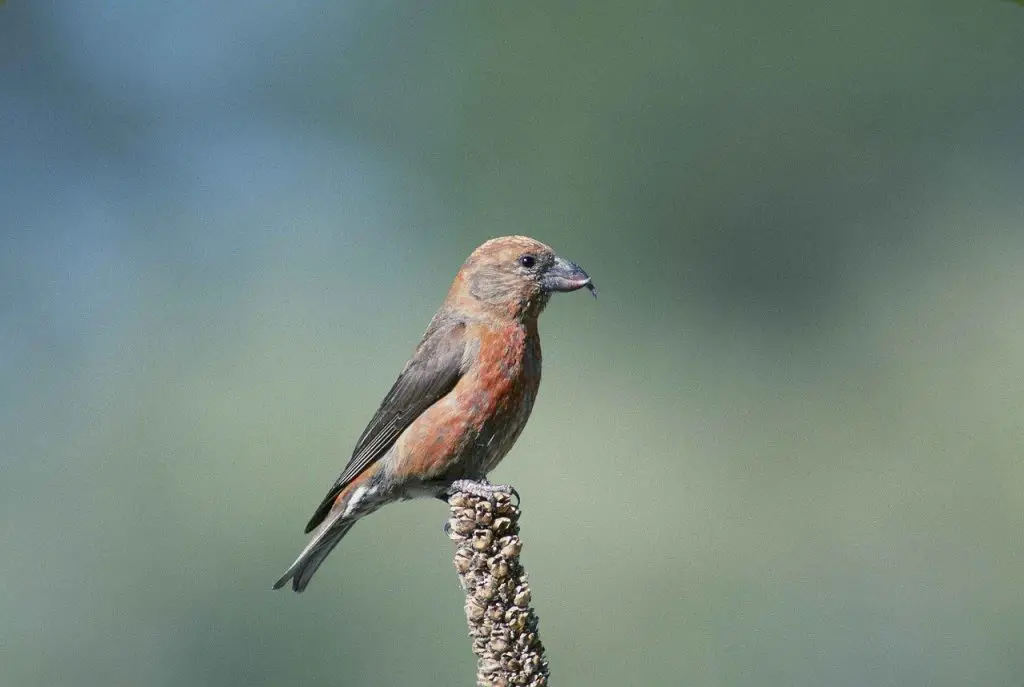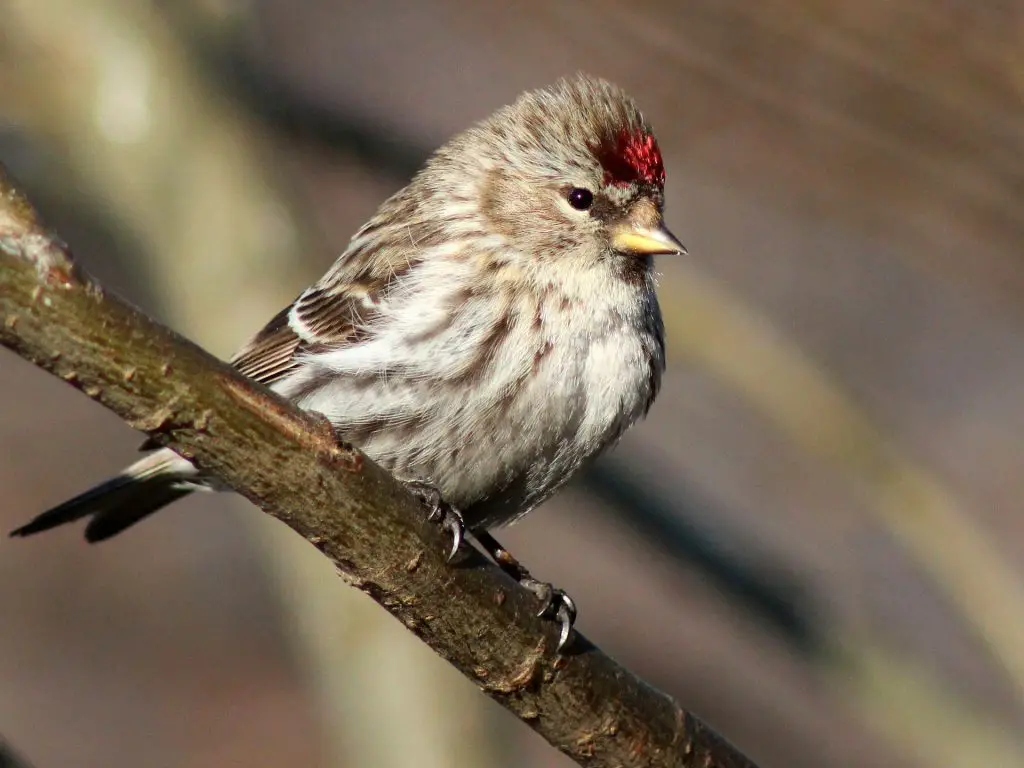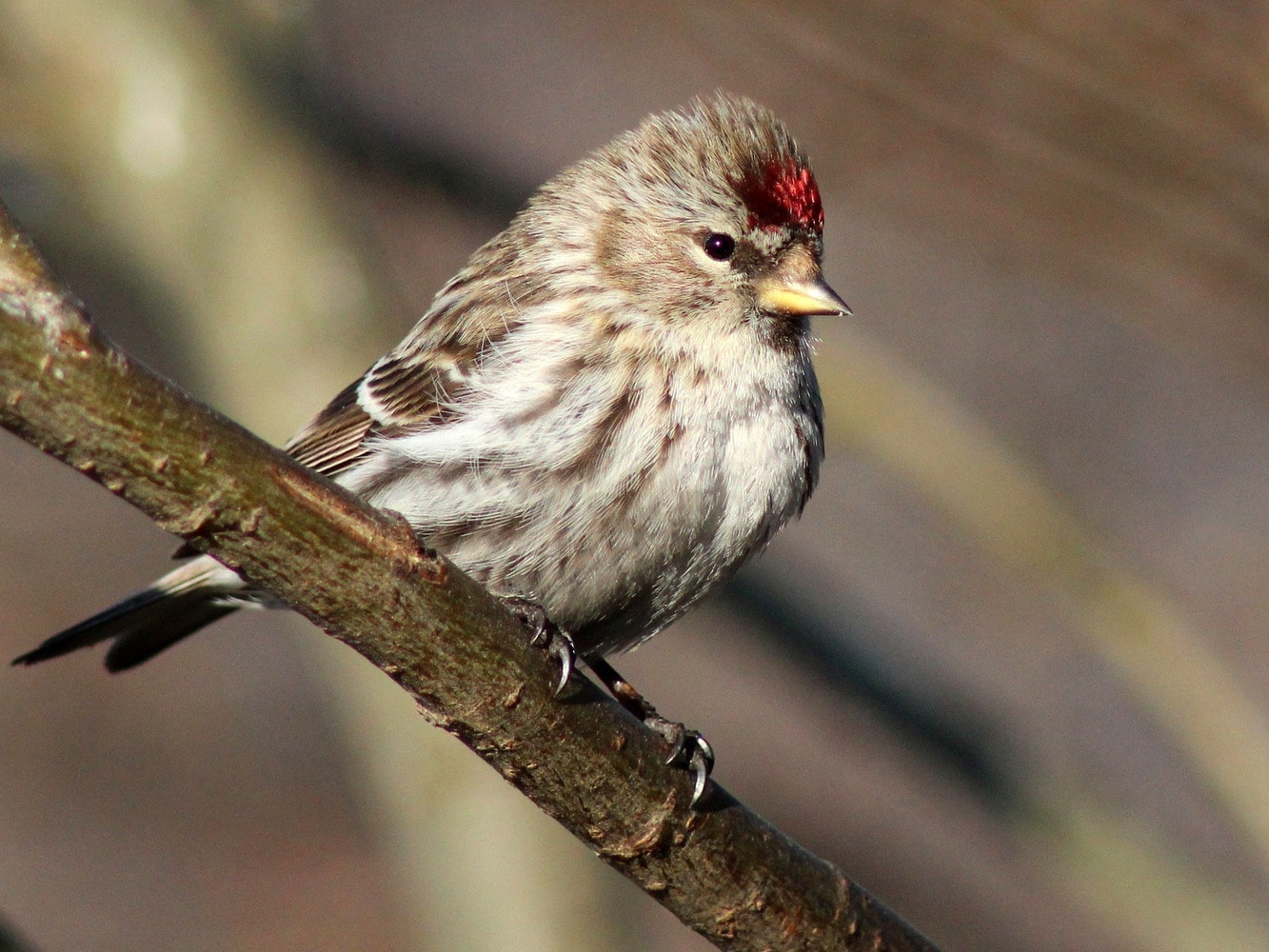Considering the significant amount of extensive birding trails, state and national parks, and various habitats, there's no surprise how Michigan is home to several astounding finch bird species.
Now...
You probably noticed either the rich raspberry-red bird or the purple one that often travels in flocks and frequently visits your finch bird feeders.
These eye-catching creatures are the Michigan finches, varying in color, shape, and size, but all have distinct conical bills with sharp edges.
For sure you're wondering if these finches are fun to care for or if they're as warm and beautiful as their colors, keep reading as we discover more about them.
The Interesting Variety in Michigan Finch Species
Hailing from the Fringillidae family, these finches are famous for being grain-eating songbirds and are widespread in North America.
You probably find it bemusing to browse through different pictures of finches in Michigan online, each having a unique appearance and mostly varying in size.
Natural selection, environmental change, and cultural evolution notably contribute to these radical changes, making finches highly adaptable to various food sources. Here are several of the different types of finches in Michigan:
1. American Goldfinch
This finch is amongst the most common birds you will see in Michigan during winter, typically breeding in July and August.
It is a frequent visitor of bird feeders, especially those with native thistles and milkweeds, enjoys drinking and bathing in birdbaths, and has bell-like calls during flight.
The goldfinch is also a very amicable bird, looking for food sources in small groups.
An adult male’s body turns from having a black forehead and bright canary-yellow feathers in summer to an olive-brown shade in winter.
Contrarily, an adult female shows off dull yellowish-green feathers with black wings in summer and turns into a blend of olive-brown and slightly yellowish feathers in winter.
Their bird chirping at night like “po-ta-to-chip” is, in fact, a flight call and will alert you of their presence. You will often see goldfinches in open habitats, woodland edges, low shrubs, and suburbs.
They are strictly vegetarian, so they prefer feeding on elm, thistle, birch, alder, some insects to a limited extent, and some sunflower and nyjer seeds at bird feeders.
2. House Finch
This finch species is North America's most widespread songbird and a frequent backyard visitor.
You can readily identify an adult male house finch with its blend of brownish underparts and rosy red upper breast. Concurrently, the adult female has plain grayish-brown feathers with blurry markings in its bottoms.
It has a sharp, melodic voice that you will hear singing loudly in most neighborhoods.
House finches are remarkably adaptable in habitat preference. As their name entails, they like to nest and hunt for food near homes, city parks, farmland, shrubby fields, and open woodlands.

These species do not migrate, but they are often wandering while searching for food sources like fruits, buds, weed seeds, sunflower seeds, and sometimes feed on insects.
House finches also prefer feeding on the ground and in birdfeeders; you will frequently see them perching on high trees or shrubs when resting.
3. Purple Finch
This bird has a close resemblance to Cassin and house finches. Identifying one from the others will require careful observation.
It predominantly travels during the daytime and migrates in large groups.
A purple finch has a big, stocky head; the male having a bright raspberry-red shade with visible streaks in spring, and the hue gets lighter in winter. Females and juveniles are less colorful; the females are mostly brownish with bold facial patterns, a pronounced white eye stripe, and a yellowish underwing.
You can particularly see these finches in the suburbs, shrubby areas, coniferous forests, orchards, and backyards.
They enjoy feeding on seeds, especially during winter, even weeds, tree buds, and berries, and sporadically eat some insects during summer. Moreover, these purple finches also love nibbling on black sunflower seeds and thistle seeds.
4. Red Crossbill
This bird is an intrusive winter visitor and famous for being a pinecone seed predator. They have extremely powerful bills that give them an edge over other finches in effortlessly prying seeds from pine cones.

You will see traveling flocks dwell in groves and forests where cone-bearing trees are in abundance, in mixed forests, parks, or suburbs.
These species prefer being in smaller groups when visiting salt licks and rural roads, having no regular migrating pattern, since they move depending on food sources’ availability.
Red crossbills have stubby bodies, big heads, and thick necks for all genders.
Additionally, a male crossbill is recognizable with its shade of dull red or orange with dark brown wings, red tail, and crown.
The female’s distinctive features are yellowish feathers, dark wings, and greenish breasts, while the juveniles are brownish and have overall streaks that look paler at the bottom.
5. Evening Grosbeak
It is common to witness evening grosbeaks feeding noisily in small flocks at bird feeders during winter. These birds thrive in forests with cone-bearing trees when breeding and prefer nesting and food hunting in high trees with broad leaves.
They primarily eat seeds, tree buds, maple sap, and small fruits.
When not in the woods, you will know that they’re out there in a flock once you hear their sweet, sharp calls or gathering at feeders for some sunflower seeds.
However, varying flight calls depend on particular subspecies per region.
This short-tailed finch is large, almost double the size of a goldfinch, and has a pale-colored bill. Its male has bright yellow eyebrows, a blackish head that fades into a golden brown body with black bottoms and wings.
The female grosbeak has gray feathers with black and white wingtips and a yellowish neck; the young ones closely resemble adult females.
6. Pine Siskin
This streaky slim finch is commonly confused for a female house finch or a winter goldfinch, but unlike any other finch, it has a notched tail. It has brown feathers, a pale eyebrow, yellow wings and rear, and a distinctively sharp triangular bill.
Pine siskins invade a broad spectrum of areas, frequently visiting bird feeders, mixed woods of pine and alder. Their kind will most likely have a mass migration if they find that food sources are inadequate.
These siskins prefer feeding on seeds like thistle and sweetgum, young buds of elms and willows, and some insects in rare instances.
7. Common Redpoll
The common redpoll is kindred to the hoary redpoll, although it has a more widespread species. The northern forest experiences a scarcity in seed production every other year, which causes these irruptive species to look for food in the farther south.
The common redpolls have this impressive reputation of being winter finches since they can withstand cold temperatures.
They like breeding in cone-bearing forests and shrubby tundra habitats; they stay in woodland edges and backyard feeders in winter. You will identify these redpolls with their massive streaks, pink chests, and red crowns.

8. Hoary Redpoll
Despite coexisting with one another, being closely related, and sharing a resemblance, the hoary redpoll and the common redpoll do not crossbreed. It is a small Michigan finch having a pale brown shade with a red crown patch and white back streaks.
These redpolls sometimes gather in flocks when foraging for food. They are fond of ground feeding on windblown seeds and show a preference for buds, seeds, weeds, stink grass, and some insects in sunnier months.
9. White-Winged Crossbill
You will know that there are white-winged crossbills in an area once you notice scattered cone debris or when you hear a sharp, chattering “plik” sound.
It has unique, crossed mandibles, with males having a striking crimson-red shade, black wings, notched tails, and white wingtips.
A greenish hue with streaked underparts and one visible white wingtip make a female crossbill distinguishable, while juveniles have brown streaks. They inhabit arctic forests abundant with spruce, hemlock, fir, and sometimes insects when available.
10. Pine Grosbeak
The pine grosbeak is the largest, easily recognizable finch in the family of Fringillidae, with four subspecies in North America.
You can find these birds in feeders during winter, and in summer, you will find them in open forests, singing from pine, fir, and spruce treetops. Their kind enjoys feeding tree buds, conifer seeds, weed seeds, wild fruits, and some insects in summer.
Its male has a dominant pinkish shade from the head down to the belly, with gray underparts, black wings, and white wingtips.
The female pine grosbeak has a grayish body, has a slightly yellowish head and back. They have varying flight calls but mostly sound like a whistle in a rise and fall pitch.
Effectively Attracting Finches In Your Backyard
Finches are gorgeous birds that are welcome guests in any backyard. They have attractive energy and breathtaking colors that can help us relax and alleviate stress while watching them. Here are some helpful tips so that finches will find your yards hard to resist:

Ensure that you place feeders in an area where finches feel safe
Choose the kind of food that finches love, like nyjer, sunflower seeds, and more.
Put out a birdbath so they can drink and bathe whenever they please.
Select the appropriate bird feeder that will provide convenient access for small birds like finches.
Create an environment that will encourage finches to nest in your yard, like having seed-bearing plants
Maintain the cleanliness of feeders and birdbaths to prevent the risk of disease
Add bright, colorful ribbons that delicately flap in the wind since the rhythmic movement and attractive color will catch the finches’ attention.
Keeping Finches As Pets
Finches are easy to look after but similar to other pets, you must provide proper care, including a regular cleaning schedule and daily feeding to keep them happy. However, there are only certain finch species that you can have as pets; here are some of them:
- Zebra Finch
- Gouldian Finch
- Society Finch
- Canary Finch
- Star Finch
- Owl Finch
- Strawberry Finch
Read Also: Finches in Texas
Frequently Asked Questions About Michigan Finches
Are there finches in Michigan?
You can find several finch species in Michigan’s urban areas, lakes, city parks, and farms. Some of these species even find their native habitat in this state’s open woods and grasslands.
Are there blue finches in Michigan?
The blue grosbeak is a rare finch and is not a native bird of Michigan. It is a nomadic bird that is native to Brazil and Bolivia. You will typically see blue grosbeaks in the United State’s central and southern parts during the spawning period. The extent of their northern border is Southern Ohio, which is four hours south of Michigan.
Do finches stay in Michigan for the winter?
Although winter may seem like a dull season, some finches enjoy flocking at feeders and birdbaths, even in the coldest season. Depending on the weather condition and available food sources, here are some finches that tarry in Michigan for the winter:
- House finch
- Common redpoll
- Evening grosbeak
- Hoary redpoll
- Pine grosbeak
- Pine siskin
- Purple finch
- White-winged crossbill
- American goldfinch
Final Thoughts
Michigan is indeed an excellent destination for inquisitive birders since it is home to phenomenal birds that you can enjoy in any season.
The state offers a diversity of environments that lure not only finches but many other unique bird species. You may visit some birding trails or hang out in some feeders to witness some of their remarkable inhabitants.
Whether you intend to have these songbirds as yard mainstays or as a household pet, you will find it useful to understand a bird’s feeding habits, diet, and behavior.
Knowing more about them will allow you to have a healthier and enjoyable interaction with these breathtaking feathered friends.
